“思想@媒介”译丛是由中国传媒大学出版社与复旦大学信息与传播研究中心合作推出的一套前沿学术译丛,原书由英国著名学术出版机构Polity Press出版。译丛共包含六种图书,分别阐释了六位著名思想家(本雅明、海德格尔、维利里奥、卡斯特、基特勒和齐泽克)对媒介的认识与思考。为确保中文翻译的高品质与高水准,现面向国内学术界公开征集优秀译者,欢迎对翻译这套译丛感兴趣的专家学者参与报名。
一、译丛简介
丛 书 名:“思想@媒介”译丛(暂名)
丛书主编:黄旦 孙玮
出 版 社:中国传媒大学出版社
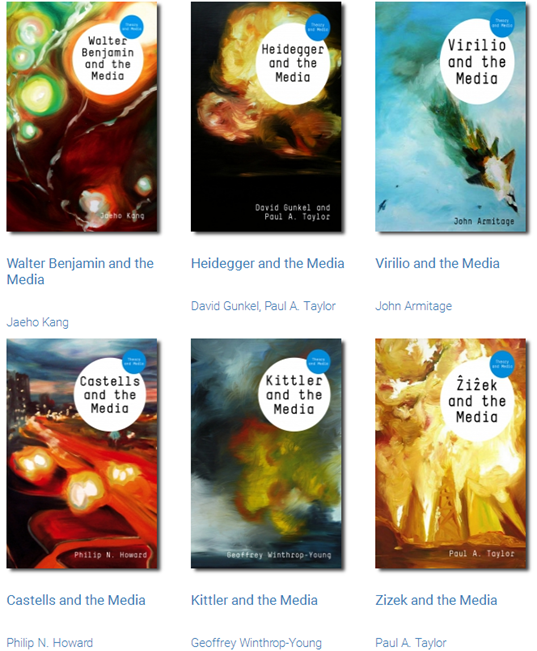
(点击查看图书详细信息)
第一,自愿报名。具有相关学科背景或开展过相关主题研究者优先。请有意者填写“报名表”(见附件)后发送邮件至idea_media2018@163.com。(报名截止时间:2018年6月30日)
第二,遴选试译者。从所有报名者中选出一到三位试译者进行试译。入选者,我们将进行公示;未入选者,恕不再一一回复邮件告知。(试译者公示时间:2018年7月10日)
第三,试译。试译者每人试译约一万字。注:试译稿按照80元/千字支付翻译稿酬。(试译完成时间:2018年7月31日)
第四,确定译者。试译稿完成后交丛书主编(或另聘专家)匿名评审,根据试译稿质量确定该书译者,译者确定后将予以公示。(译者公示时间:2018年8月31日)
第五,签约。译者与出版社签署《图书出版合同》,约定出版要求及翻译稿酬等。
三、译者要求
1. 英语水平和专业知识过硬,能读懂原文并准确理解文意。
2. 有较好的中文表达能力,能在读懂原文的基础上用清晰流畅的文笔表达出来。
3. 能积极与丛书主编和出版社编辑沟通进度,准时保质保量交稿。
4. 具有团队合作精神,乐于为构建跨学科性质的学术协作体贡献力量。
5. 为每种图书撰写介绍性的导读文字。
6. 译丛出版后,配合出版社开展营销推广活动。
7. 努力创造条件,与外国思想家或原书作者开展国际学术交流对话,对话成果拟以专题形式发表在《中国传播学评论》上。
附件
附件一: 译者报名表.docx
译者报名表.docx
 Walter Benjamin and the Media
Walter Benjamin and the Media
· July 2014
· 196 pages
Walter Benjamin (1892-1940), one of the most original and perceptive thinkers of the twentieth century, offered a unique insight into the profound impact of the media on modern society. Jaeho Kang’s book offers a lucid introduction to Benjamin’s theory of the media and its continuing relevance today.
The book provides a systematic and close reading of Benjamin’s critical and provocative writings on the intersection between media - from print to electronic - and modern experience, with reference to the information industry, the urban spectacle, and theaesthetic politics. Bringing Benjamin’s thought into a critical constellation withcontemporary media theorists such as Marshall McLuhan and Jean Baudrillard, the bookhelps students understand the implications of Benjamin’s work for media studies todayand how they can apply his distinctive ideas to contemporary media culture.
Kang’s book leads to a fresh appreciation of Benjamin’s work and new insight into criticaltheoretical approaches to media. The book will be of particular interest to students andresearchers not only in media and communication studies but also in cultural studies, filmstudies and social theory, who are seeking a readable overview of Benjamin’s rich yetcomplex writings.
Jaeho Kang is Lecturer in Critical Media and Cultural Studies at the Centre for Media and Film Studies, SOAS, University of London
Table of Contents
1 Introducing Dr Benjamin
There and Then, Here and Now
Figuring Benjamin
Configuring Benjamin
2 The Crisis of Communication and the Information Industry
Introduction
Storytelling and the Crisis of the Novel
The Newspaper and the Information Industry
The Intellectuals in the Age of Mass Media
Conclusion
3 Radio and Mediated Storytelling
Introduction
Towards a Critical Sociology of the Audience
Radio Model
Some Motifs for Media Pedagogy
Conclusion
4 Art and Politics in the Age of their Technological Reproducibility
Introduction
Photographic Reproducibility
The Media Culture of Distraction
Media and Democracy
Conclusion
5 The Media City: Reading The Arcades Project
Introduction
Phantasmagorias of Modernity
Media Spectacle and Urban Space
Tactility of Media Critic
Conclusion
6 Conclusion: The Actuality of Benjamin’s Media Critique
Notes
Further Reading
Index
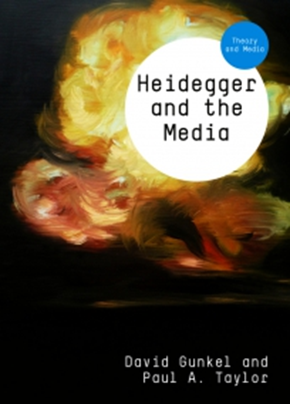 Heidegger and the Media
Heidegger and the Media
· July 2014
· 160 pages
The most significant philosopher of Being, Martin Heidegger has nevertheless largely been ignored within communications studies. This book sets the record straight by demonstrating the profound implications of his unique philosophical project for our understanding of today’s mediascape. The full range of Heidegger’s writing from Being and Time to his later essays is drawn upon.
Topics covered include:
-an analysis of Heidegger's theory of language and its relevance to communicationsstudies
-a critical interpretation of mass media and digital culture that draws upon Heidegger'skey concept of Dasein
-a discussion of mediated being and its objectifying tendencies
-an assessment of Heidegger's legacy for future developments in media theory
Clear explanations and accessible commentary are used to guide the reader through thework of a thinker whose notorious reputation belies the highly topical nature of his keyinsights.
In a world full of digital networks and new social media, but little critical insight,Heidegger and the Media shows how a true understanding of the media requiresfamiliarity with Heidegger’s unique brand of thinking.
David Gunkel is professor of communication at Northern Illinois University. He is the managing editor of the International Journal of Zizek Studies.
Paul A. Taylor is associate professor in the Institute of Communication Studies at the University of Leeds.His previous publications include Zizek and the Media (Polity, 2011). He is the General Editor of the International Journal of Zizek Studies and Editorial Board Member of the International Journal of Baudrillard Studies, Fast Capitalism and the International Journal of Badiou Studies.
Table of Contents
Introduction
1 We Need to Talk About Media
2 Mediated Truth
3 In Media Res
4 The Dasign of Media Apps: The Questions Concerning New Technologies
Conclusion
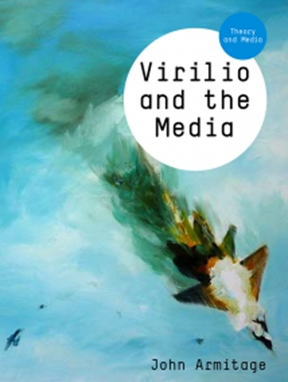 Virilio and the Media
Virilio and the Media
· June 2012
· 160 pages
In books such as The Aesthetics of Disappearance , War and Cinema , The Lost Dimension , and The Vision Machine , Paul Virilio has fundamentally changed how we think about contemporary media culture. Virilio’s examinations of the connections between perception, logistics, the city, and new media technologies comprise some of the most powerful texts within his hypermodern philosophy.
Virilio and the Media presents an introduction to Virilio’s important media related ideas, from polar inertia and the accident to the landscape of events, cities of panic, and theinstrumental image loop of television. John Armitage positions Virilio’s essential mediatexts in their theoretical contexts whilst outlining their substantial influence on recentcultural thinking. Consequently, Armitage renders Virilio’s media texts accessible, priminghis readers to create individual critical evaluations of Virilio’s writings. The book closeswith an annotated and user-friendly Guide to Further Reading and a non-technicalGlossary of Virilio’s significant concepts.
Virilio’s texts on the media are vital for everyone concerned with contemporary mediaculture, and Virilio and the Media offers a comprehensive and up to date introduction tothe ever expanding range of his critical media and cultural works.
John Armitage is professor of media at Northumbria University
Table of Contents
Acknowledgments
Introduction
1 The Aesthetics of Disappearance
2 Cinema, War, and the Logistics of Perception
3 New Media: Vision, Inertia, and the Mobile Phone
4 City of Panic: The Instrumental Image Loop of Television and Media Events
5 The Work of the Critic of the Art of Technology: The Museum of Accidents
Conclusion
Guide to Further Reading
Glossary
References
 Castells and the Media
Castells and the Media
· July 2011
· 160 pages
One of the most prolific and respected scholars today, Manuel Castells has given us a new language for understanding the impact of information and communication technologies on social life.
Politicians can no longer run for office without a digital media strategy, new communication technologies are a fundamental infrastructure for the economy, and the internet has become an invaluable tool for cultural production and consumption. Yet as more of our political, economic, and cultural interaction occurs over digital media, theability to create and manipulate both content and networks becomes real power.
Castells and the Media introduces a great thinker, presents original theories about thenetwork society, and encourages readers to use these theories to help them understandthe importance of digital media and social networks in their own lives.
Philip Howard is Associate Professor of Communication at the University of Washington.
Table of Contents
Detailed Table of Contents
List of Figures
Acknowledgements
Introduction
Chapter 1: Castells and the Theory of the Network Society
Chapter 2: Media Economics and Life Online
Chapter 3: Networks of Power and Politics
Chapter 4: Cultural Industries in a Digital Century
Chapter 5: Mobile and Social Media
Chapter 6: ConclusionÑMedia Rules and The Rules of Media
Appendix
Glossary and Index
References
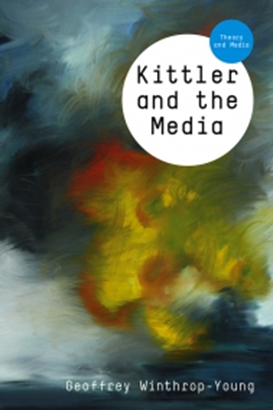 Kittler and the Media
Kittler and the Media
· January 2011
· 200 pages
With books such as and Discourse Networks Gramophone, Film, Typewriter and the collection Literature, Media, Information Systems , Friedrich Kittler has established himself as one of the world's most influential media theorists. He is also one of the most controversial and misunderstood.
Kittler and the Medi a offers students of media theory an introduction to Kittler's basic ideas. Following an introduction that situates Kittler's work against the tumultuousbackground of German 20th-century history (from the Second World War and the culturalupheaval of the late 1960s to reunification), the book provides succinct summaries ofKittler's early discourse-analytical work inspired by French post-structuralism, his media-related theorising and his most recent writings on cultural techniques and the notationsystems of Ancient Greece.
This clear and engaging overview of a fascinating theorist will be welcomed by studentsand scholars alike of media, communication and cultural studies.
Geoffrey Winthrop-Youngis Professor of German at the University of British Columbia.
Table of Contents
Introduction.
Chapter I Background-Biography and Beyond.
Chapter II Discourse Analysis.
Chapter III Media Theory.
Chapter IV Greek Cultural Techniques.
Chapter V Controversial Achievements.
Further Reading.
Works Cited.
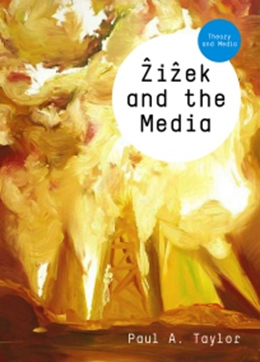 Zizek and the Media
Zizek and the Media
· December 2010
· 192 pages
· Slavoj Zizek reaches the parts of the media that other theorists cannot. With sources ranging from Thomas Aquinas to Quentin Tarantino and Desperate Housewives to Dostoyevsky, Zizek mixes high theory with low culture more engagingly than any other thinker alive today. His prolific output includes such media friendly content as a TV series (The Pervert's Guide to Cinema) a documentary movie (Zizek!) and a wealth of YouTube clips. A celebrity academic, he walks the media talk.
· Zizek and the Media provides a systematic and approachable introduction to the mainconcepts and themes of Zizek's work, and their particular implications for the study ofthe media. The book:
· Describes the radical nature of Zizek's media politics
· Uses Zizekian insights to expose the profound intellectual limitations of conventional approaches to the media
· Explores the psychoanalytical and philosophical roots of Zizek's work
· Provides the reader with Zizekian tools to uncover the hidden ideologies of everyday media content;
· Explains the ultimate seriousness that underlies his numerous jokes.
· As likely to discuss Homer's Springfield as Ithaca, Zizek is shown to be the ideal guide fortoday's mediascape.
Paul A. Taylor is a Senior Lecturer in Communications Theory at the Institute of Communications Studies, University of Leeds
Table of Contents
Preface: The Dog’s Bollocks . . . at the Media Dinner Party
Acknowledgements
Introduction: ‘The Marx Brother’, ‘The Elvis of Cultural Theory’, and Other Media Cliches
1 The Mediated Imp of the Perverse
2 Zizek’s Tickling Shtick
3 Big (Br)Other: Psychoanalysing the Media
4 Understanding Media: The Sublime Objectification of Ideology
5 The Media’s Violence
6 The Joker’s Little Shop of Ideological Horrors
Conclusion: Don’t Just Do It: Negative Dialectics in the Age of Nike
Notes
Bibliography
Index



